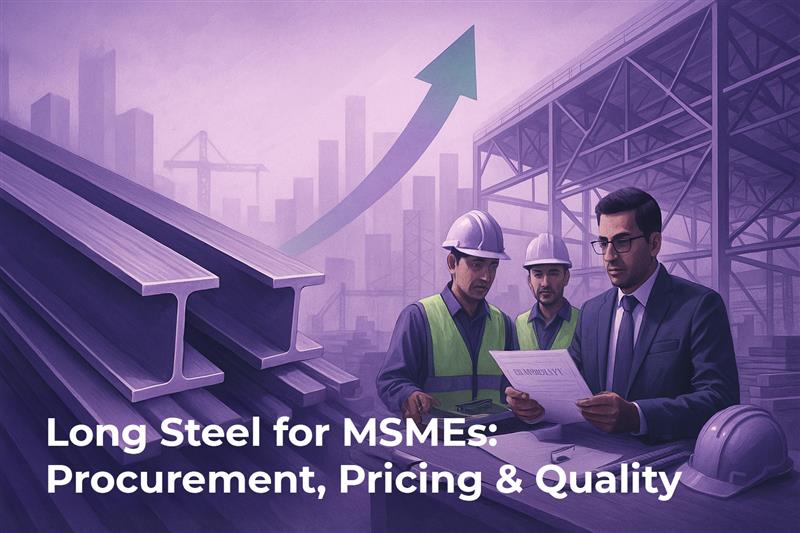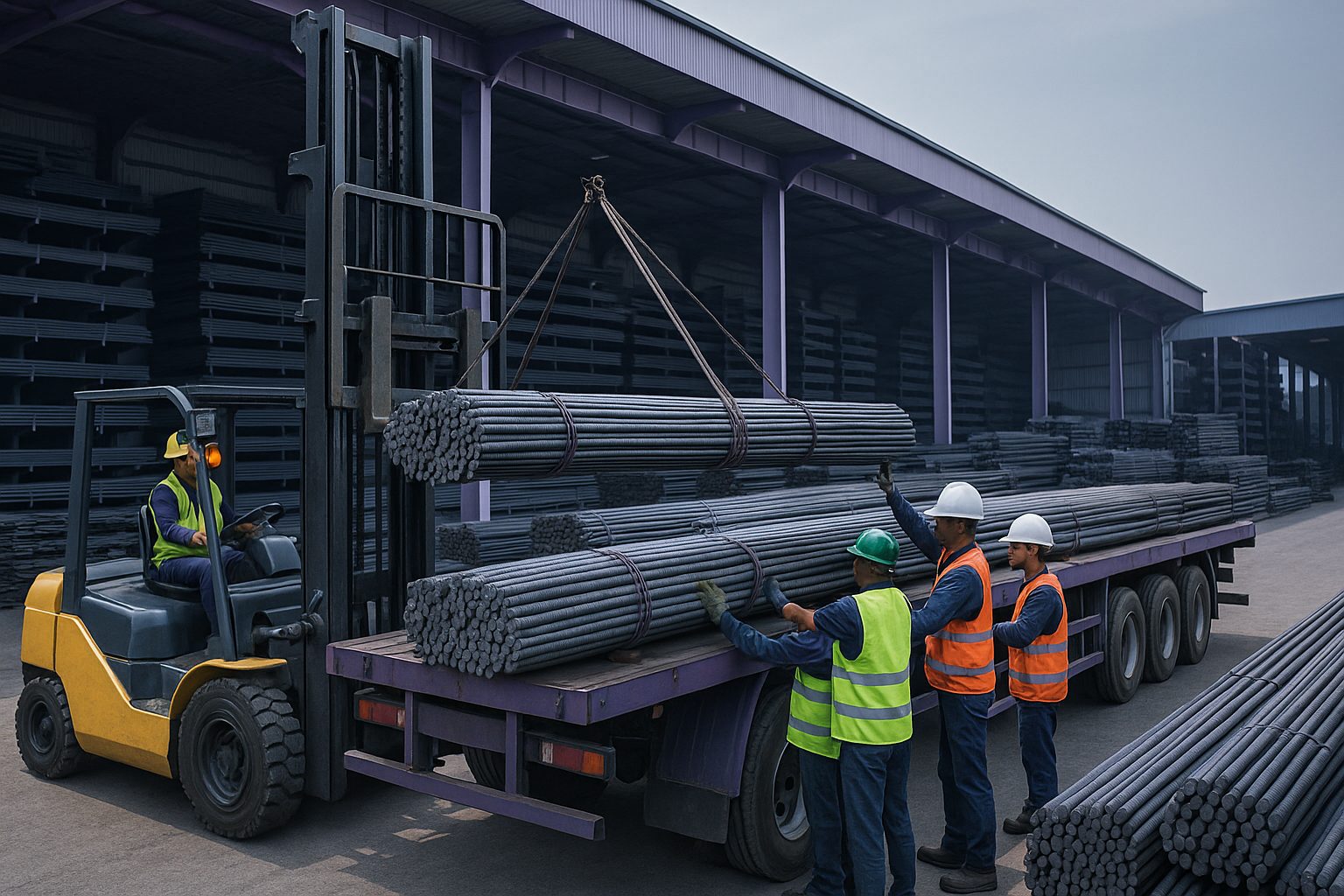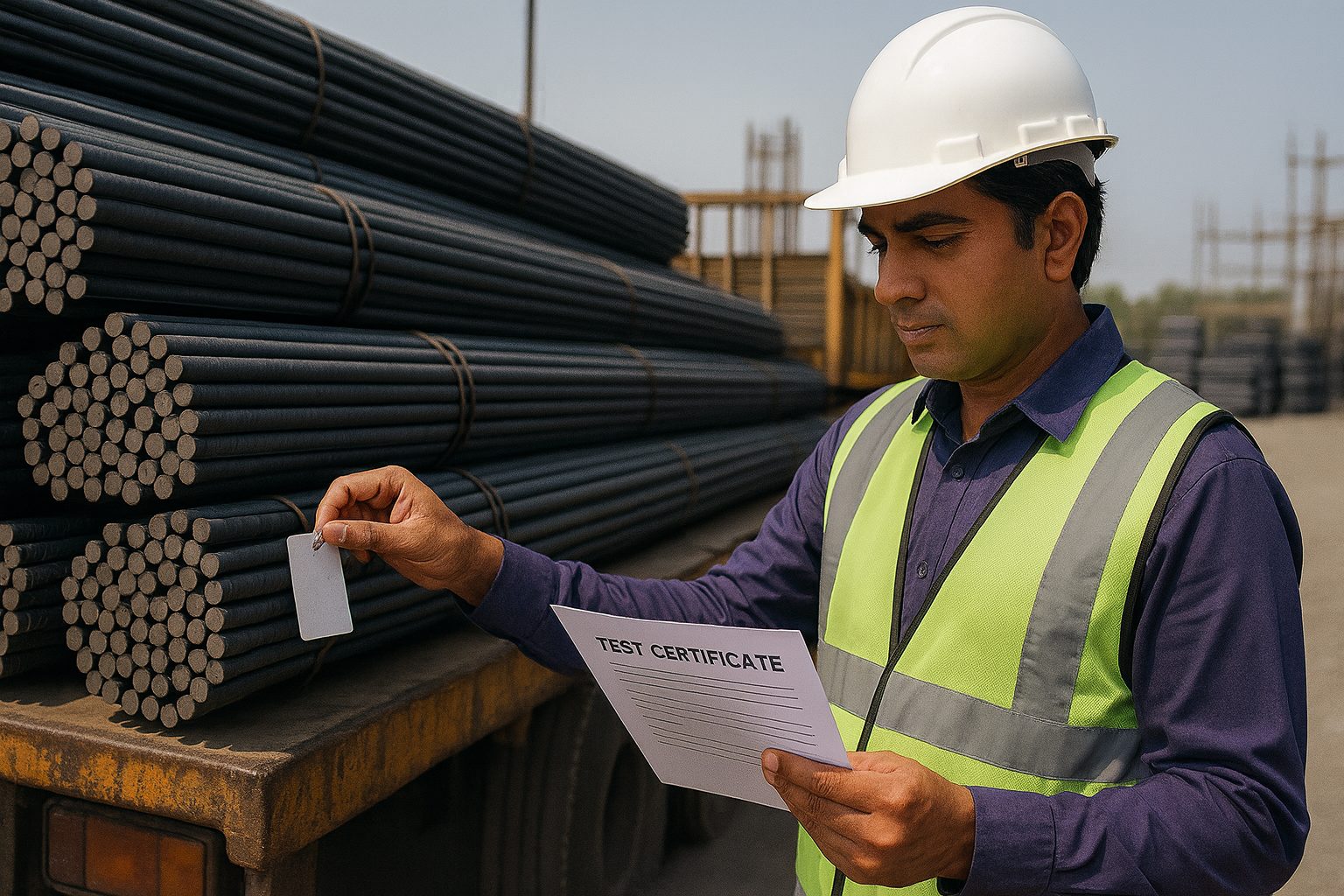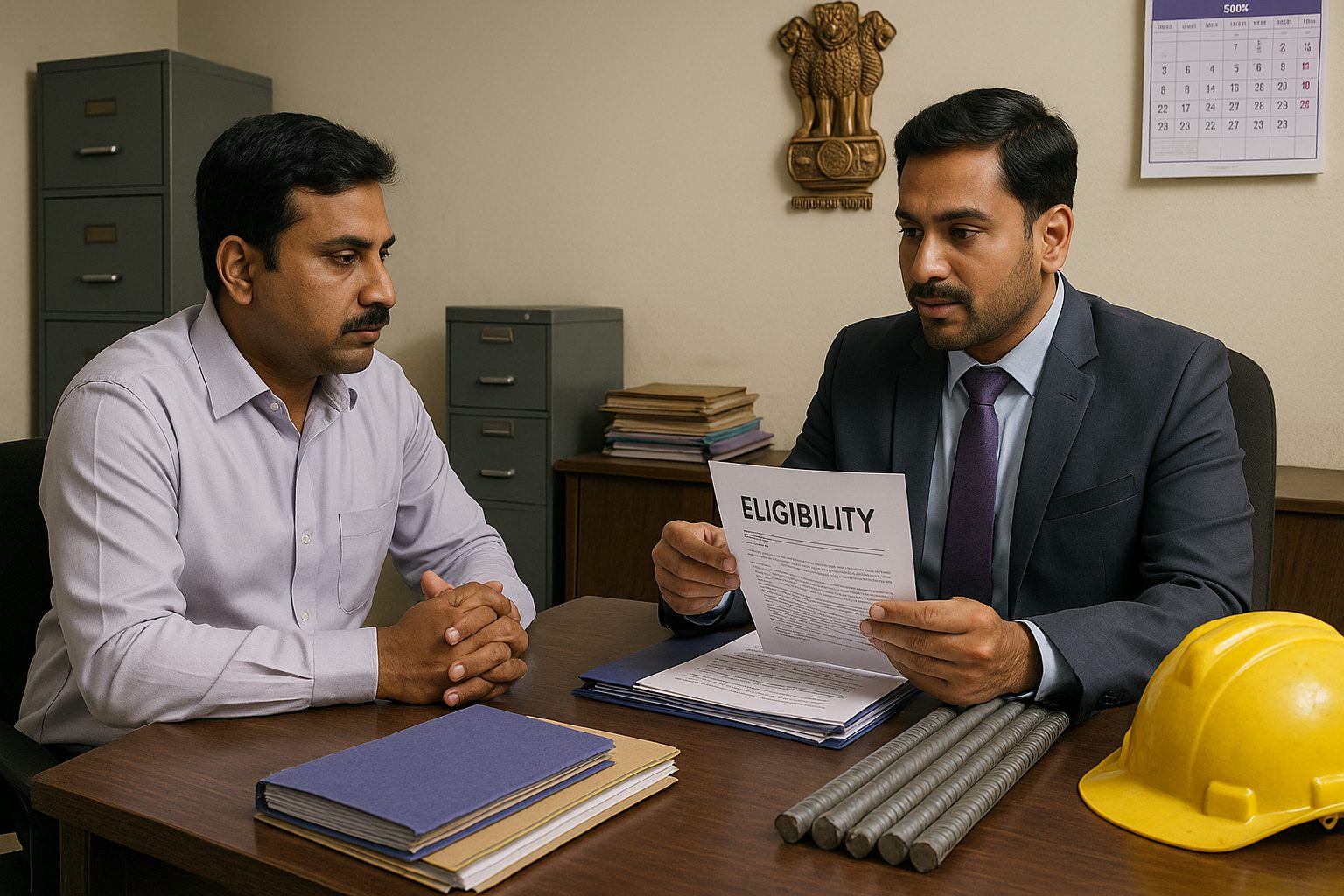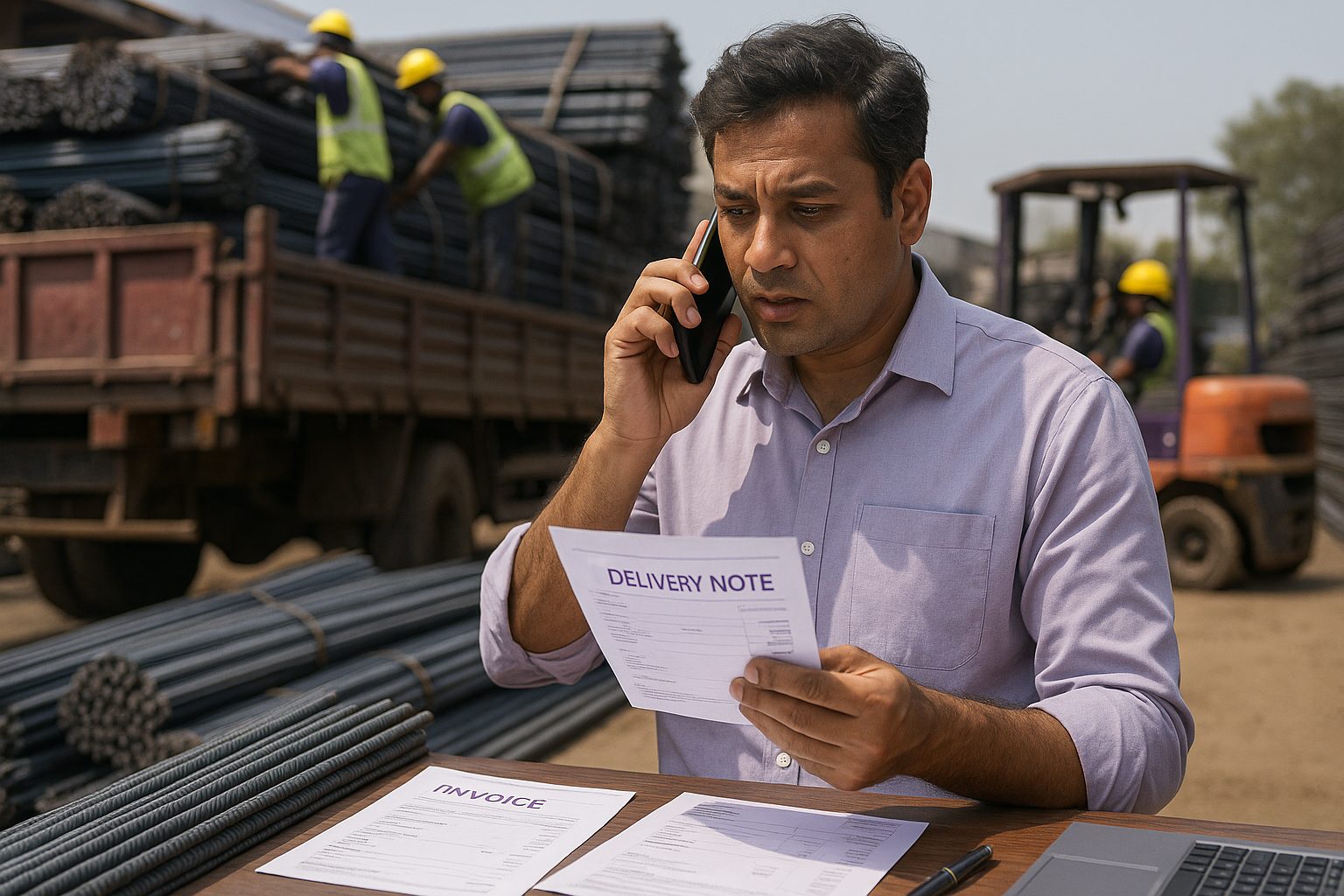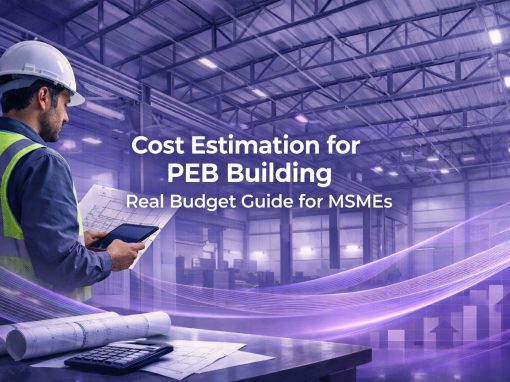Table of Contents
Introduction
Steel is everywhere in India’s growth story. Roads, flyovers, industrial sheds, housing colonies – none of them can stand without it. Within the larger industry, long steel has a special role. Rebars, channels, beams, angles, wire rods – these are the products that give a structure its backbone.
For small and medium enterprises, long steel is never just another input, rather it decides:
- Whether a project stays on track or slips behind schedule.
- If a tender submission passes inspection or gets rejected.
- Whether cash keeps moving or gets locked up in disputes.
MSMEs touch long steel from both sides. Many produce it in rolling mills that feed the local markets. Many more buy it daily for steel fabrication, contracting, or supply jobs. Their challenges are rarely captured in neat reports. Prices change without warning, deliveries get delayed, and paperwork at times fails to clear at site. Each of these issues hits small businesses much harder than large corporates with deeper pockets.
This article steps into that space. It looks at long steel from the MSME lens – the hurdles, the rules, the schemes, and the practical choices that shape survival in a tough market.
What is long steel
In the steel trade, the term long steel is used for products shaped into extended forms. This covers rebars, wire rods, angles, channels, beams, billets, and even railway rails. These are the pieces that give strength and structure to almost every project in the country. From a housing colony in a tier-II town to an industrial bridge on a national highway, long steel is the material holding the design together.
Flat steel, rolled into sheets and coils, has a very different purpose. It goes into roofing, appliances, or cladding. Long steel, by contrast, is chosen where reinforcement and load-bearing capacity are critical. That difference makes it central not only to large public infrastructure but also to the routine work handled by small contractors and fabrication shops.
Why it matters for MSMEs
For MSMEs, the role of long steel goes far beyond simple procurement. A rebar of the wrong grade can derail a tender submission. Public projects usually demand Fe500 or Fe550 TMT bars in line with IS 1786. If an MSME delivers material that does not pass site testing, the penalty is immediate: rejection of the batch, loss of transport expense, and payments being pushed further down the line. For a business already working on thin margins, that can be the difference between steady cash flow and financial strain. Which is why supplier selection, in this category, is as much about reliability and certification as it is about unit price.
There is also the question of where the steel comes from. Roughly two-thirds of India’s long product output is supplied by the secondary sector – small rolling mills and sponge iron-based units. They keep local markets supplied, yet they are vulnerable to power tariffs, raw material shortages, and uneven testing facilities. Buyers often face the trade-off between a cheaper offer today and the risk of variable quality tomorrow.
In practice, long steel decides more than just material strength. It decides whether a fabricator can complete a housing project on schedule, whether a contractor can maintain credibility in a government job, and whether a supplier is trusted for the next order. For thousands of MSMEs in construction and infrastructure sector, it is not a background commodity. It is the material at the centre of their competitiveness.
Procurement challenges faced by MSMEs
For a small business owner, buying long steel is rarely a clean process. Rates rise without warning, suppliers push back delivery dates, and a single missing test certificate can bring a project to a halt. Bigger firms may take the hit and move on. MSMEs cannot – margins are too thin, and delays quickly turn into cash problems.
Price swings
Steel has always been volatile. One day rebar prices look manageable, the next day they climb by a few thousand per tonne. Many smaller firms rely on local stockists for spot deals. It works when cash is tight, but it also means living with uncertainty. Long-term contracts can protect against price hikes, yet those deals demand bulk orders and advance payments – a stretch for most MSMEs.
Delayed supply
Getting timely delivery is another headache. Mills naturally prioritise large infrastructure buyers. A small fabricator asking for a few truckloads of wire rods often ends up waiting. When material does not arrive, machines sit quiet, workers stand idle, and contractors pay truck drivers for wasted hours at site. These are hidden costs that eat away at already slim profits.
Quality risks
A lot of long steel in India comes from secondary producers. They keep supply flowing, but their output can be uneven. High phosphorus, missing BIS marks, incomplete test reports – MSMEs see it often. The real trouble comes when inspectors at a government project reject a batch. Replacing the consignment costs time, transport, and credibility.
Finance strain
Steel is cash heavy. Banks are slow to extend credit, and distributors rarely offer generous terms. On top of that, client payments arrive late. It means procurement is pushed back, projects slip, and sometimes orders are lost. For many MSMEs, keeping the cash cycle moving is as hard as finding the right steel.
The trade-off
Every decision feels like a gamble. Buy cheap and risk rejection. Buy on credit and risk cash shortfalls. Wait for contracts or take the local dealer’s price. These are not abstract choices; they are the daily reality of running a small steel business.
Compliance, standards and tender requirements
For small businesses dealing in long steel, compliance is never just a formality. It is the point at which material is either accepted or turned back. A load of rebars that looks fine on dispatch can still be rejected at site if the paperwork is incomplete. And once that happens, payment gets blocked and freight money is lost.
Most tenders leave no space for interpretation. They spell out exactly what is needed – Fe500 or Fe550 TMT bars under IS 1786, or structural sections conforming to IS 2062 and IS 808. Inspectors will not bend the rules. If dimensions don’t line up or if the grade is off by even a small margin, the material will sit outside the gate until it is replaced.
Paperwork is equally unforgiving. Mill Test Certificates linking each bundle to its heat number, BIS licences with valid dates, e-way bills, sometimes even NABL reports – all are checked in sequence. Many MSMEs lose time over small mistakes such as expired certificates or mismatched heat numbers. On paper these look minor, but on site they can stop unloading for days.
Tender conditions have become stricter. Requirements like traceability from billet to bar, digital invoice matching, or country-of-origin declarations are now common. Larger firms may have compliance teams. Smaller ones depend on suppliers, and when suppliers miss a detail the liability passes down.
The mistake is often the same: chasing the lowest rate and assuming quality papers will follow. Inspectors go only by codes and certificates. A cheaper batch that fails compliance quickly becomes the most expensive choice. For MSMEs, getting compliance right is not about paperwork. It is about survival, steady cash flow, and building trust for the next order.
Government schemes and relief measures
Policy support has been rolled out to ease the load on smaller firms in the steel sector. Some initiatives make a visible difference; others remain difficult to access. A few of the main ones include:
PLI for specialty steel
This scheme rewards large producers for making value-added grades inside India. The direct benefits don’t flow to MSMEs, but in time, they do gain. With more grades available locally, dependence on imports goes down and sourcing becomes easier.
Export-parity pricing
Introduced to bring domestic steel rates closer to global prices. The intent was to prevent smaller buyers from paying more at home than exporters abroad. In practice, it helps in a few categories, but not across the board. Many MSMEs say the reach is uneven.
Power tariff rebates
A few state governments offer lower electricity charges to rolling mills. For sponge iron and secondary units, power bills eat into margins, so this relief is important. Buyers downstream also feel the impact through slightly reduced costs.
Testing lab subsidies
Grants to set up or upgrade accredited labs. Quality testing is a sore point for smaller producers, so support here can cut compliance hurdles. Still, awareness is limited, and many eligible firms never apply.
Other state incentives
Cluster support, technology-upgrade assistance, or soft credit lines. These vary by state and are often tied up in paperwork. For MSMEs without dedicated staff, chasing the benefit can be harder than running daily operations.
Practical tips for smarter procurement
Many MSMEs treat steel buying as a quick transaction, but it often decides how smoothly projects run. A cheaper batch that fails inspection costs more than a well-priced, certified one. Payments get stuck, trucks are turned away, and deadlines slip. Reliability and paperwork are as valuable as the rate on the invoice.
Price movements make the task harder. Rebars can climb overnight when big projects are active, and small buyers on spot deals carry the risk. Some firms reduce the impact by planning part of their requirement in advance, even if cash is tight. Others continue to buy weekly and end up paying more across the year. Watching cycles and locking even a portion helps.
Paperwork is another point where projects stall. Heat numbers, bundle tags, BIS certificates – if one detail does not align, bills are blocked. Inspectors rarely accept explanations. Assigning someone in the team to match documents before dispatch saves disputes later. It sounds small but prevents long delays.
There are also newer options. Digital platforms and cluster buying groups allow MSMEs to pool demand. When orders are combined, mills treat them more seriously and offer steadier supply. It is still not the norm, but those who try it often find the difference.
Cash flow pressure remains the biggest hurdle. Steel ties up capital, and client payments come late. Aligning purchase schedules with receivables and negotiating staggered deliveries with suppliers gives some breathing space. It may not remove the strain, but it reduces the chance of projects stopping midway.
Smarter procurement is less about chasing bargains and more about reducing shocks. Careful supplier choice, awareness of price trends, tighter paperwork, and realistic cash planning allow smaller firms to compete without being constantly on the back foot.
Conclusion
For MSMEs, long steel is not just another product on the order sheet. It decides how fast a project moves, how soon bills are cleared, and how clients judge reliability. One missing certificate can freeze payments. One rejected bundle leaves trucks waiting at the gate. A sudden spike in rebar prices eats straight into margins.
Schemes are announced and rebates are promised, but the smallest firms often struggle to access them. Paperwork is heavy, information does not travel fast, and many owners are too busy keeping projects alive to chase desks. What usually makes more difference is discipline – checking documents before dispatch, buying at the right time, keeping some cash aside for price swings, and choosing suppliers that can be trusted more than once.
Volatility cannot be removed from the steel trade. Prices will shift, inspectors will object, deliveries will be delayed. But MSMEs that prepare for these shocks are the ones that keep moving. Procurement done with care and compliance followed properly turns long steel from a risky gamble into a tool for growth. That difference shows in firms that struggle from order to order, and those that slowly build stability in a difficult market.
Looking to procure steel?
Tata nexarc helps manufacturers, builders and MSMEs source certified steel products, compare prices, and choose the right grade as per IS codes—with complete traceability and procurement confidence.
FAQs
What decides the price of long steel for MSMEs?
How do smaller firms handle sudden price hikes?
Why do most still go through dealers?
Which tenders usually mention long steel?
How can a buyer check BIS papers are real?
How do firms cut down freight on steel?
Why does scrap matter here?
Can MSMEs export long steel?
What finance routes do firms use for bulk steel?
Do e-procurement sites really help?
Charul is a content marketing professional and seasoned content writer who loves writing on various topics with 3 years of experience. At Tata nexarc, it has been 2 years since she is helping business to understand jargon better and deeper to make strategical decisions. While not writing, she loves listing pop music.
